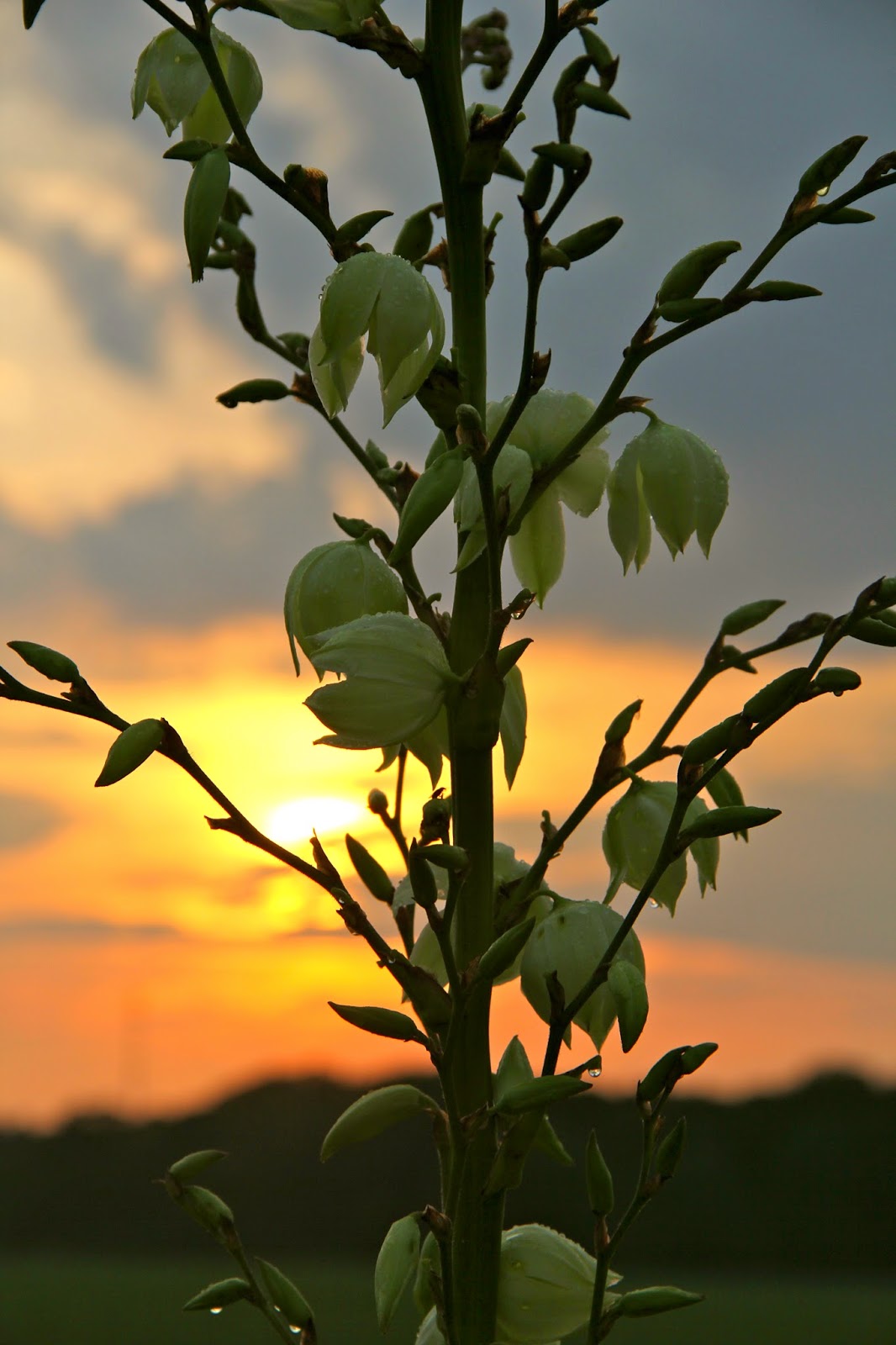Early June is yucca time in the heart of Carolina. Yards and gardens, campuses and parking lots throughout central and eastern North Carolina feature striking columns of white blossoms towering above the impressive green rosettes of needle-sharp, dagger-like leaves which characterize these beautiful plants.
This lovely pair of cultivated yuccas caught our eye at sunset, so we paused to capture a few shots for Hoot Owl Karma. While a number of cultivated varieties exist, North Carolina is home to at least three native yuccas, Yucca filamentosa, Yucca aloifolia and Yucca gloriosa.
All three (and their cultivars) are popular in gardening and landscaping. Wild examples of filamentosa are still found throughout the area, this being the common "bear grass" of my childhood in the Sandhills region.
Aloifolia and gloriosa are native to North Carolina's coastal areas and dunes, and are often referred to as Spanish Daggers, Spanish Bayonets or other epithets referencing the dangerously sharp spiny tipped leaves of these yuccas. The leafy portion of both these yuccas tend to be taller and more impressive than that of Yucca filamentosa, and this is often reflected in their selection for landscaping applications.
With yucca, like many other plants in our experience, there is a strong association with certain insect species; in this case, leaffooted bugs. Leaffooted bugs are "true bugs," from Order Hemiptera, and are related to stink bugs, squash bugs and assassin bugs.
Rarely will one find a yucca in bloom in North Carolina without its entourage of leaffooted bugs, and this duo was no exception. In fact, this plant's complement of Leptoglossus phyllopus, characterized by the flattened leaf-like prominences on their legs and double white dashes on the back, seemed eager to stake out a spot in the sun after the recent shower.
The bugs feed on the plants' tissues by piercing the flesh of the stem or bud with their beak-like mouthparts and then "sucking" or ingesting the plants' juices. Since the flower stalk will die after flowering anyway, this feeding method typically isn't too detrimental to the health of the plant, although this same bug is known to cause commercially significant damage to some fruit and nut crops through this feeding method.
Keep an eye out for blooming yuccas in your neighborhood over the next few weeks, and after you've savored their beauty from afar, step up and introduce yourself to some leaf-footed bugs.






No comments:
Post a Comment